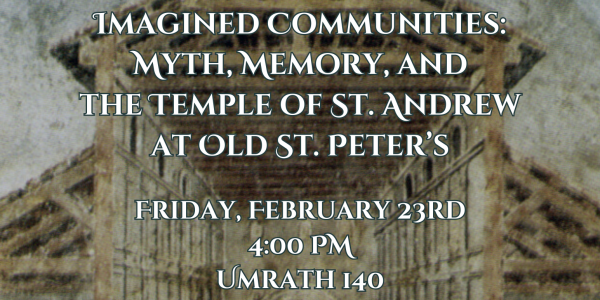Imagined Communities: Myth, Memory, and the Temple of St. Andrew at Old St. Peter’s
About the year 500 the bishop of Rome Symmachus converted an ancient rotunda standing beside the Vatican Basilica of St. Peter into a memorial shrine. He dedicated the building to the apostle Andrew, filled it with the relics of seven different saints, and decorated it with mosaics and Latin poetry. For the next millennium Symmachus’s Temple of St. Andrew was a standard stop on the Vatican pilgrimage route. Simultaneously St. Peter’s emerged as the unrivalled “capitol” of Latin Christendom, attracting visitors and pilgrims in increasing numbers from throughout western Europe and the Mediterranean basin. This talk treats the history of St. Andrew’s as emblematic of that larger story while asking us to consider the ways in which myth and memory conspired with papal and clerical initiatives not only elevate St. Peter’s to international status but also to forge a notion of Christendom capable of transcending the political divisions of the post-Roman medieval world. It exposes its methodological assumptions both by foregrounding the contributions of several influential twentieth-century scholars and by evoking comparison with other imagined communities, ancient and contemporary. Its aim therefore is to underscore the relevance of research in the humanities as well as to illuminate a storied past.
This event is co-sponsored by the Department of Classics, the Department of History, the Department of Art History & Archaeology and the Program of Religious Studies.

